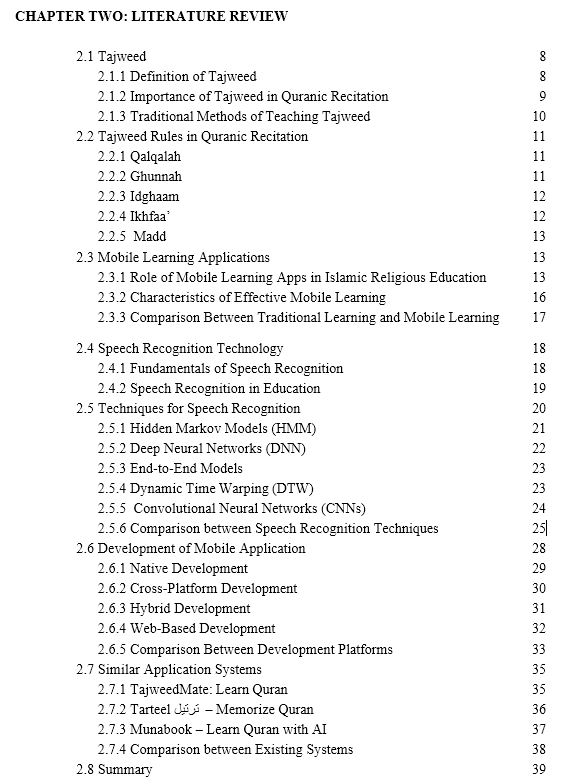A literature review is a survey of scholarly sources on a specific topic. It provides an overview of current knowledge, allowing you to identify relevant theories, methods, and gaps in the existing research.
Writing a literature review involves finding relevant publications (such as books and journal articles), critically analyzing them, and explaining what you found. There are five key steps:
- Search for relevant literature
- Evaluate sources
- Identify themes, debates and gaps
- Outline the structure
- Write your literature review
What should be in the literature review (FYP)
- Introduction of the case study
- Related information about the case study
- Comparison of the methods/technique that can be used
- Similar studies/application/system/research
- Summary
Example structure for literature review
- 2.1) Domain
- 2.2) Domain continues
- 2.3) Technique/approach/method
- 2.3.1) Method 1
- 2.3.2) Method 2
- 2.3.3) Method 3
- 2.3.4) Comparison of the methods
- 2.4) Development
- 2.4.1) Tool 1
- 2.4.2) Tool 2
- 2.4.3) Tool 3
- 2.4.4) Comparison of Tools
- 2.5) Similar application/system
- 2.5.1) Apllication1
- 2.5.2) Apllication2
- 2.5.3) Apllication3
- 2.5.4) Comparison of Applications2.6) Summary/Conclusion
Additional info
A good literature review doesn’t just summarize sources – it analyzes, synthesizes, and critically evaluates to give a clear picture of the state of knowledge on the subject.
- Do not include all published papers on a given topic.
- Need to be selective: Include the most relevant articles to our topic and make a footnote for others
- Do not cite too broad a literature and too much literature
- Make sure is that references are up-to-date.
- Do not cite papers in low-tier journals. Also, normally do not cite papers published before 2000 unless they are critically important (i.e. theoretical underpinning / core authors in the topic)
- Do not list/summarize the literature findings /results:
- Accumulation of papers
- Start with the reference of a paper (e.g. Kim (2010) examines…..” and then describes the paper (each paragraph)
- Organize the discussion in an effective manner
- Integrate the literature ->“Transitions”
- Transitionshelp connect paragraphs together. Examples:
- One of the first researchers to investigate this problem is Lee (2010)…..
- Peter and Smith (2013)counter Lee’s argument . . .
- The issue becomes more complex when a third school of thought is considered …..
- The issue becomes more complex when a third school of thought is considered …..
- Divide long paragraphs
- If there are two or more ideas in a single paragraph, split them up
- Break up long paragraphs even if they contain in a single idea
- Readers tend to skip long paragraphs.
- No paragraph should be longer than half a page (around 15-18 lines)
- A paragraph should have more than two sentences.
- In the similar application/system/research section, compare with your proposed application/system/research
- Word Choice in the literature review:
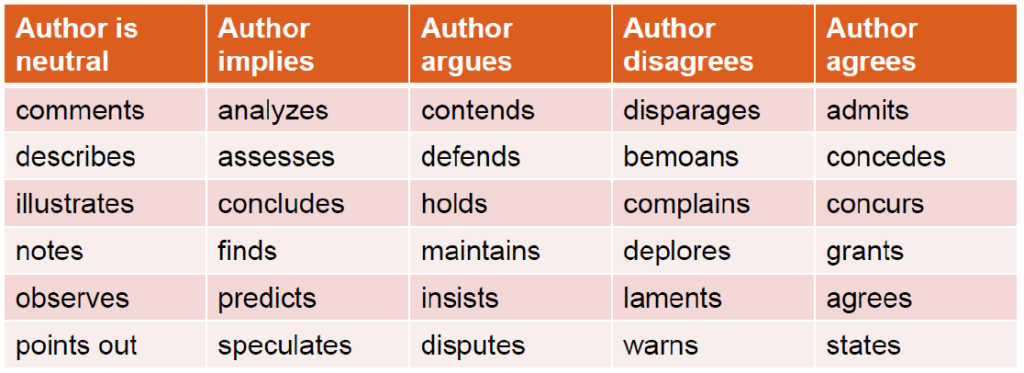




Prediction of Gestational Diabetes Mellitus using Machine Learning Technique
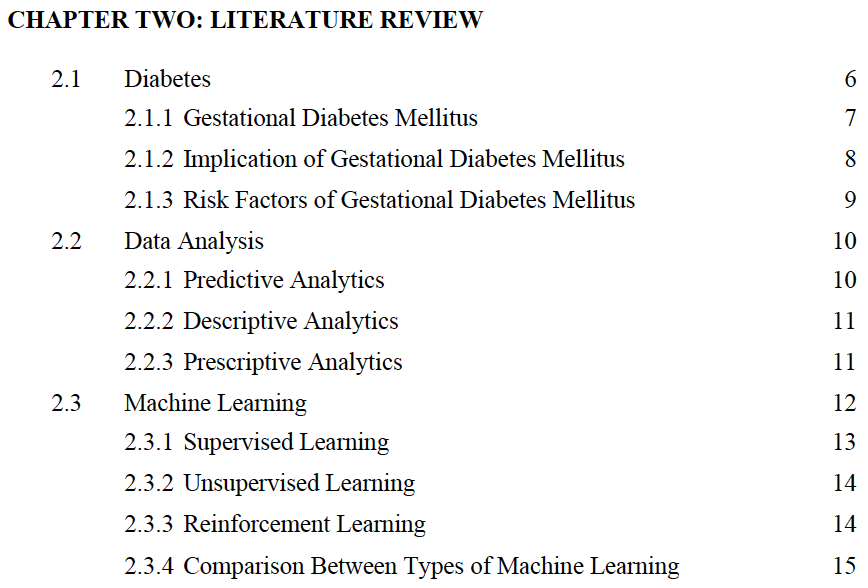
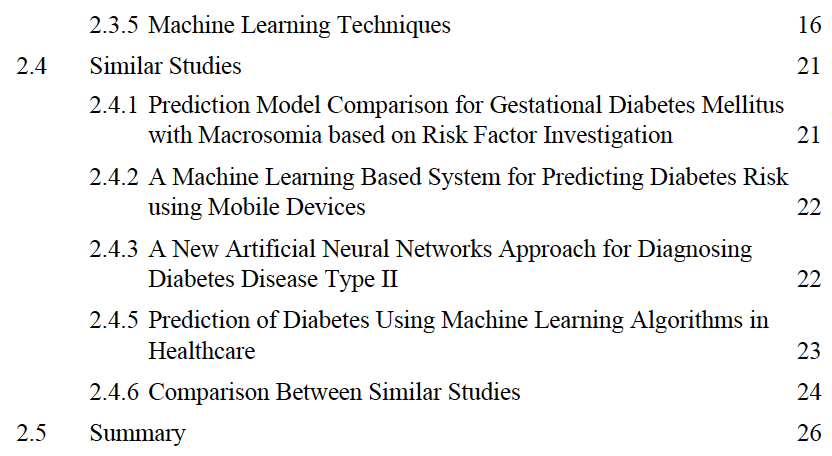
Driving Alert System Based On Facial Expression Recognition Mobile Application
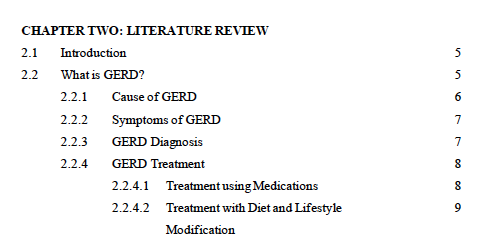
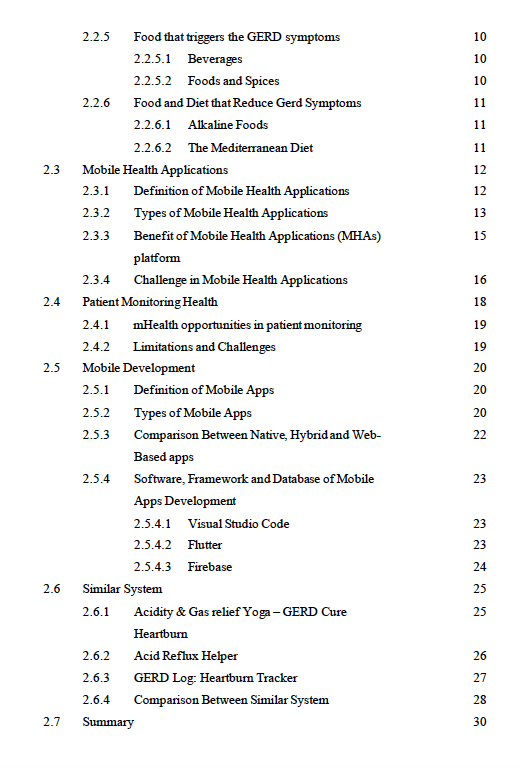
TasbeehTally: Your Dhikr Companion using Speech Recognition

An AI-Assisting Tajweed Learning Mobile Application with Speech Recognition
